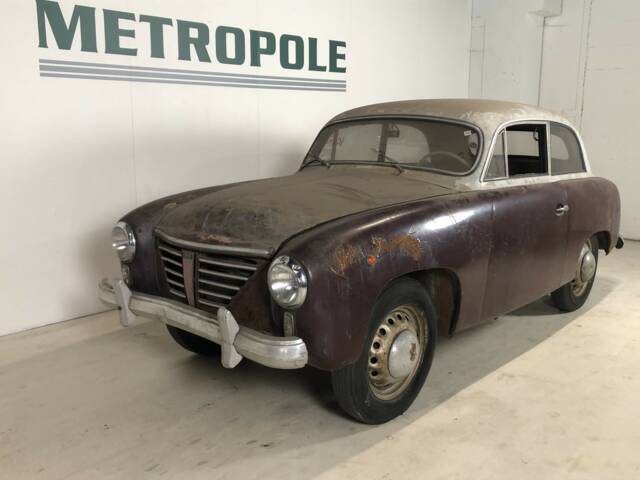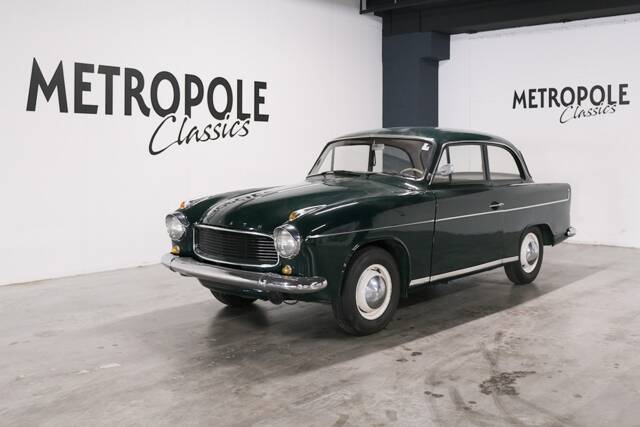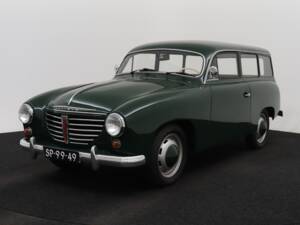- Voiture
- Goliath (3 offres)
Goliath classic cars for sale
Goliath vehicles, produced between 1928 and 1961 in Bremen, Germany, stand out for their pioneering three-wheeled utility vehicles, compact passenger cars, and unique engineering solutions. Their rarity and distinctive mechanical design attract collectors, with many examples offered today as restoration projects or preserved originals.
Résultats de la recherche

1952 | Goliath 700
Goliath GP700 M0403

1960 | Goliath Hansa 1100
Goliath Hansa 1100 M0285

1955 | Goliath 700
Fully restored, documented. A rare icon. Excellent condition.
History of Goliath
Goliath was founded in 1928 as a subsidiary of the Borgward conglomerate in Bremen, Germany by Wilhelm Tecklenborg and Carl F. W. Borgward. Initially recognised for three-wheeled microtrucks like the Blitzkarren and Goliath Pionier, Goliath’s focus was to deliver practical, economical vehicles for urban use. Many early Goliath vehicles could be driven without a licence and were tax-exempt, which helped the marque gain traction among small business owners and tradespeople in pre- and immediate post-war Germany.
During WWII, production halted as the Bremen factory was destroyed. Goliath resumed activity in 1949, again as a Borgward subsidiary. The post-war years saw a shift to four-wheeled passenger models and practical utility vehicles, adapting quickly to Germany’s economic recovery and new mobility needs. Production ceased in 1961 following the collapse of Borgward, marking the end of Goliath as a brand but leaving a legacy of practical innovation and memorable designs.
Model history
Goliath's first model, the Pionier (launched 1928), was derived from the Blitzkarren delivery tricycle. Only around 4,000 Goliath Pioniers were built by 1934, featuring a one-cylinder two-stroke engine and a lightweight three-wheel configuration. As production resumed post-war, Goliath introduced the GD 750 three-wheeled light truck (1949–1955), followed by models such as the GP700 (1950–1957), the more refined GP900, and later the GP1100, which marked the transition to water-cooled four-cylinder engines. The 1950s saw the release of the Express camping van and military-aimed Type 31 Jagdwagen, though not all models were commercially successful. By 1958, the Goliath 1100 was marketed under the Hansa nameplate as the company shifted away from its three-wheeled heritage. Goliath’s model portfolio closed in 1961 with a total of six different passenger cars and five different small transporters developed.
Highlights and distinctive features
Goliath vehicles are best known for their three-wheeled architecture and water-cooled two-stroke engines, as well as pioneering Bosch direct fuel injection in small passenger cars—a world-first. Notably, the small Goliath trucks and vans offered practical, affordable load capacities for urban delivery businesses, and proved highly visible on West German city streets in the economic boom years. Due to their limited production runs, most surviving Goliaths are rare on the classic market. Common features include minimalistic dashboards (sometimes with only one instrument), basic interior trims, heating by engine proximity, and sometimes period cargo-carrying solutions.
Technical data
Special Editions and Collectible Models
The GP700 and GP900 were offered in special body styles such as coupé, cabriolet, and estate (Combi), making these variants particularly interesting to collectors. The Express camping van is also notable for its integrated cabinetry, beds, and early camper comforts, with Goliath branding retained only in the earliest versions before the Hansa rebranding for later 1100 models.
Weak Spots and Common Issues
As with many classic commercials, most Goliath vehicles come to market as restoration candidates or parts donors. Common issues include age- and use-related wear, incomplete documentation, and missing original accessories or papers. Unrestored vehicles may hide considerable technical or structural deficiencies, and standards of restoration quality can vary. Models with professionally restored originality and correct documentation are sought after, but buyers should never expect modern comfort or safety standards from these minimalist vehicles.
Engine, performance, transmission and handling
Most Goliath vehicles—especially three-wheelers—prioritise utility, simplicity and economy over outright performance. The two-stroke engines in the Pionier and GP700 prioritise torque for delivery use, while later four-cylinder models deliver more refined cruising but remain moderate in top speed and power, typically below 45 HP. Transmission was usually manual, and handling is stable at urban speeds but requires measured driving characteristics due to narrow track widths and lightweight construction. Vehicles like the GD750 and F200 continue to attract enthusiasts interested in pre-modern light commercial driving dynamics. 1. Hansa/GP1100 – four-cylinder, water-cooled engines, more refined. 2. GP700 and derivatives (Combi, Cabriolet, Coupé) – two-cylinder engine, pioneering Bosch injection. 3. Express van and GD750 transporter – iconic representatives of post-war urban commerce, rare survivors.
Interior, comfort, exterior and design
Goliath interiors are functional and spartan: single-instrument dashboards, minimal upholstery, and sometimes only a single window winder for the driver. Seat heating was more a consequence of engine placement than a design choice. Exteriors, especially the three-wheelers, favour upright stances and easy cargo access, with the visually unified 'GOLIATH' script badge marking the bonnet or tailgate. Special editions—especially the GP700 Combi and Coupé—added some 1950s flair with two-tone paints and chrome accents. The Express camper elevated practicality but retained the brand’s utilitarian DNA. Very few models were delivered with period accessories or high-option interiors, underscoring the brand’s practical focus.
Other features and trivia
Many Goliaths delivered to market today come with exhaustive documentation from restoration or a provenance file from classic car magazines. Some have received official evaluations, and a handful have been adapted with modern 12V electrics. Surviving examples, particularly with original bodywork and running gear, often serve as event attention-getters, advertising vehicles, or rally entrants. Reproduction and original parts supply can be challenging, fitting the brand's rarity.
Summary
Goliath vehicles exemplify unconventional German vehicle engineering from the late 1920s through the early 1960s: prioritising practicality, affordability and technical experimentation. Their scarcity, basic amenities, and local historical significance make them an interesting niche segment for classic motoring enthusiasts with a passion for restoration and motoring history.


